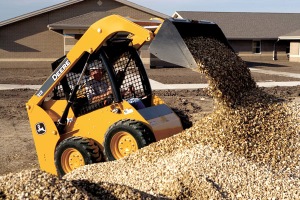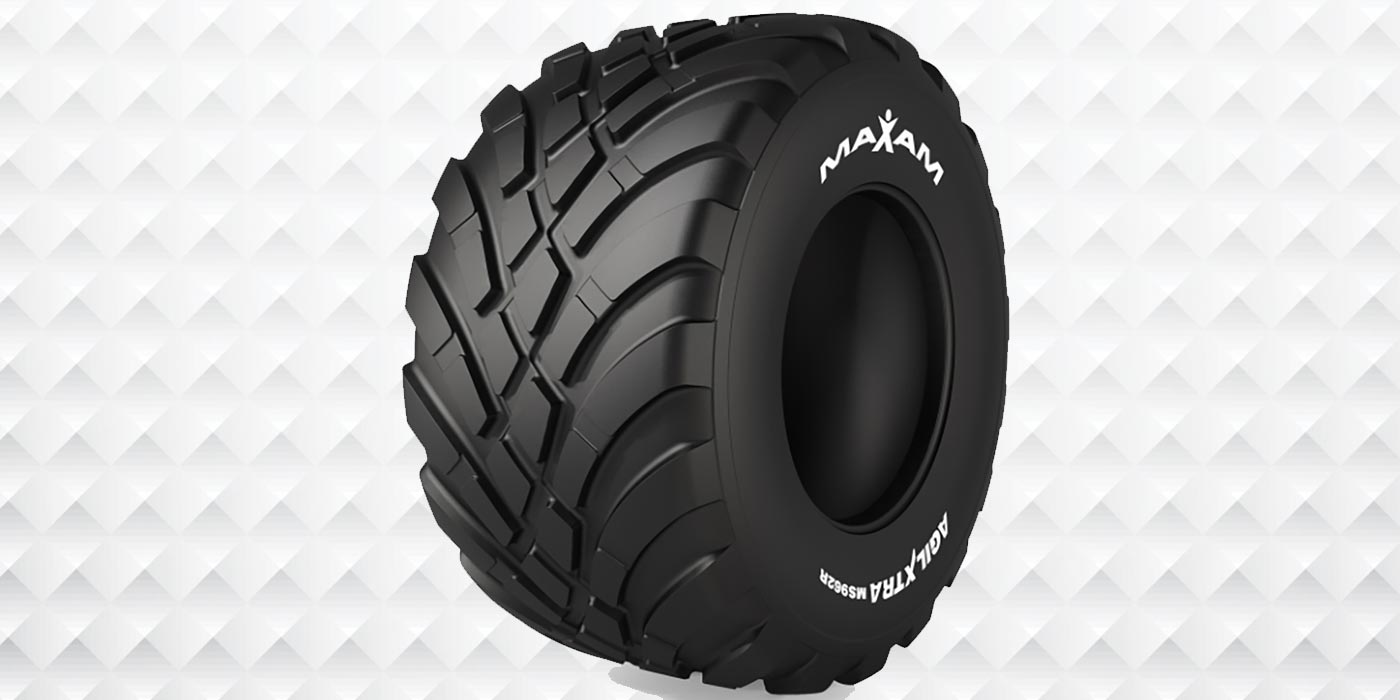 In work sites across the country, one can find the versatile skid-steer loader. Because of its convenient size and capacity for special attachments, the machine can be used by consumers and pros in a multitude of applications, including construction, farming, excavation, recycling, landscaping, mining and snow removal.
In work sites across the country, one can find the versatile skid-steer loader. Because of its convenient size and capacity for special attachments, the machine can be used by consumers and pros in a multitude of applications, including construction, farming, excavation, recycling, landscaping, mining and snow removal.
The skid-steer tire niche has changed quite a bit in the last 20 years, growing from a single standard directional tire in the early 1990s to more than a dozen options available today, according to James Tuschner, marketing director for Alliance Tire USA. This is in response to the loaders themselves becoming more specialized.
“Skid-steer loaders have always been used for a variety of different applications,” he says. “However, with the new attachments available, they’re becoming even more specialized – and the tires are following suit.”
Because of this specialization, stacking up profits in the skid-steer segment requires a knowledgeable dealer who is willing to invest the time and resources to thoroughly cover the market. Those who do will find themselves at an advantage compared to their competition.
An Evolving Market
It’s no secret that poor economic conditions in 2009 negatively impacted many tire segments, and the skid- steer market was no exception. With the decline in residential and commercial construction markets, the skid-steer loader market also diminished, according to Michael Burroughes, director of marketing for agricultural tires for Michelin North America.
“Many OEMs drastically curtailed the production of new machines as the market demand diminished at pace with the decline in the construction industry,” he says. “We think the decline has bottomed out and expect a modest recovery in 2010 driven by the stabilization trends that are reported in the banking industry. Within the segment itself we’ve seen steady growth in the sales of our steel construction radial tires, even making modest gains in marketshare in a declining market.”
Alliance’s Tuschner notes that while things have stabilized, skid-steer tire sales are far off from the highs seen in the past. However, he agrees the market is on the path of improvement.
“We’re starting to see signs of an overall market pickup,” Tuschner says. “The skid-steer market is divided into many segments, but it’s still heavily tied to construction. We see construction improving not only because the overall economy is, but also because of all the stimulus funds we continue to hear about that we hope will soon begin to produce results.”
Also a part of this changing market is the increase in equipment size and horsepower, which places added demand on tires.
“OEMs continue to develop bigger and heavier machines to meet customer demands,” Michelin’s Burroughes says. “We see a steady progression from 265/70R16.5 (10R16.5) to 305/70R16.5 (12R16.5) sizes and growth in the 14R17.5 size to specifically meet the needs of the biggest, heaviest machines.”
The specialization of skid-steer loaders means a variety of tires are available today to suit the needs of end users. For example, Alliance’s Galaxy skid-steer lineup includes tires made specifically for hard surfaces, soft soil applications and heavy debris, along with lighter duty tires that cater to the needs of the farmer or landscaper, Tuschner says.
At the Dealer Level
Due to that specialization, dealers need to make sure they don’t fall into the trap of only offering a mainstream product that will suit most customers adequately, but instead carry a few more SKUs and really satisfy the customers and their specific needs, whether it be a soft soil application, a hard surface application or a combination of the two, Tuschner notes.
“To set yourself apart from the bulk of dealers out there, you should not only offer the selection, but also be educated on specific applications. Alliance’s staff is available to help dealers not only figure out the SKUs that they need, but also the specific applications tied to those SKUs. If you take the time to get the proper training on the right tires for specific applications, you present yourself with an added profit opportunity,” he says.
For example, if a customer comes into a tire dealership and complains that the tire used in a hard surface application is wearing out too quickly, a savvy dealer has the opportunity to upsell that person to a tire that will better suit their needs, Tuschner says.
Because profit margins on skid-steer tires are higher than many segments, a dealer stands a chance to “obtain exceptional margins because of the diverse array of products that are offered for different applications,” he notes.
Customers in this segment want fast, reliable service since downtime can be extremely harmful to their business.
“When a machine is down on a job site with workers idled and productivity diminished, the delay in getting the machine back in service is critical to the operator,” Michelin’s Burroughes says. “The cost of service is minimal when compared to the total costs of the machine being down.”
He notes that owners of skid-steer loaders are increasingly looking for ways to minimize operating expenses. Because of this, Michelin offers its steel belted radial XZSL product line, which doubles the hours of performance when compared to traditional bias-ply tires, as well as decreases the costs associated with downtime from punctures, Burroughes says.
“As in any tire segment, the willingness to back up sales with excellent service is the true determinant of the profitability from the dealer’s perspective. Any retailer with access to the products may sell them but those who flourish are those who back up sales with service,” he says.
Because of the need for fast replacement, dealers typically need to keep these tires in stock. One benefit of the skid-steer market is that a relatively small number of SKUs will enable a dealer to cover the bulk of the segment.
“We continue to see two sizes – the 10-16.5 and the 12-16.5 – overwhelmingly take the majority of marketshare,” Alliance’s Tuschner says. “The small number of SKUs necessary to service the skid-steer market is a welcome change compared to what is now necessary to service the passenger/LT marketplace – a real positive for dealers.”
While the size of the market is attractive for dealers looking to enter this segment, so is the potential for added business in other tire segments.
“Even relatively small local contractors also have trucks, light trucks, backhoes and other equipment. The dealer who delivers quality and timely service is well-positioned to grow profitably in this market and leverage additional business,” Burroughes says.
The typical customer in this market is a small business owner who is focused on work and deadlines, not tire expertise.
“He naturally turns to his selected servicing dealer for advice on what to purchase when a replacement is due,” Burroughes says. “The advice given by the dealer will pave the way to garnering additional business from these customers, as well as referrals to other companies in the same business. There are additional opportunities from personal and employee purchases, as well.”













